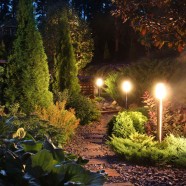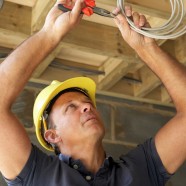What are the Electrical Requirements in Assisted Living Facilities?
Assisted living facilities are a growing business in the United States, especially in Florida and other southern states where retirees tend to gravitate. With the combined needs of an apartment complex and a medical clinic, these facilities have unique commercial electrical requirements that may not appear in any other construction job. Whether you’re renovating an older structure or creating new construction, electrical needs should be paramount when planning your facility.
Backup Power Source
Electricity is crucial for some medical procedures and equipment, but power outages don’t play favorites when it comes to health needs. For some residents in assisted living facilities, electrical power isn’t just a convenience but a matter of life and death. Your new construction electrical plan should include a permanent alternate power source in case of power outages. Florida is the lightning capital of the United States, and that means many thunderstorms that knock out power each year. Combine that fact with tropical storms, hurricane, and simple accidents and you’ll see how important an alternate source of power really is.
GFCI Outlets
If you’re renovating a relatively new building you may already have these outlets on hand, but older structures are often lacking in this basic electrical safety addition. A GFCI (Ground Fault Circuit Interruptor) outlet is installed anywhere an outlet is near a source of water. If an appliance is plugged into the outlet and it comes in contact with water, the switch inside instantly interrupts the flow of electricity to the plug. This can be extremely important to residents who may have limited mobility or those with problems with having a firm grip on smaller items such as hair dryers or electric shavers.
Security Lighting
When creating your building plan, consult with your electrical contractor in South Florida to include security lighting indoors and out. For the residents, this complex will be their home, and you’ll need security lighting on the outside of the property to help protect any valuables they may have in their rooms. Motion sensor floodlights and static property lights will illuminate the building, making it less of a target for burglars.
Security also means safety, and if the power goes out, your residents will need a safe way to find their way around. Emergency lighting will help show the way to exits, and strip lighting on hallway floors cut down on confusion in times of emergency.
Storm Protection
With lightning storms being so common in south Florida, lightning strikes can pose a real fire hazard to any building. Protect your assisted living facility with a set of lightning rods, also known as air terminals. Far from the tall, ugly poles of the old days, today’s air terminals are short and blend into a roof’s design. Any lightning that strikes your building will be harmlessly led down to a grounding area, directing the energy away from the building.
LED Lighting
Traditional light bulbs may seem like the least expensive alternative when building a new assisted living facility or renovating an old building, but LED lighting can prove to be less expensive over the life of a light. LED lights last ten times as long as traditional bulbs, or longer. In addition, they’re cool when they light up, removing a burn danger from residents and lowering the stress put on building air conditioning. LED bulbs are a sensible, frugal alternative to provide bright steady light at a fraction of the cost of older systems.
Read More6 Types of Security Lighting for the West Palm Beach Home
A security lighting system in your West Palm Beach home is the smartest inexpensive theft deterrent you can find. Thieves and burglars look for homes they can ransack without being seen, and darkness is one of their biggest tools. If your house is well-lit in a multitude of ways, thieves are more likely to move on to one of your less-prepared neighbors when planning a job. Your home is likely your largest investment; it pays to invest in multiple types of security lighting to keep your family and property safe.
#1: Motion Activated Floodlights
It’s smart to install general purpose floodlights that cover your entire yard, but it makes no sense to have them running all night long. That just wastes power and raises your electrical bill. Have your electrical contractor in West Palm Beach install motion activated lights around your property. When someone moves onto your property a bright light will shine on him, preventing him from sneaking into the house under cover of darkness. The sensitivity on these lights can be adjusted to ignore smaller woodland creatures, only turning on when there’s an actual human threat in the area.
#2: Timed Security Lighting
When you want your property at least slightly lit at all times, but still don’t want outrageous electrical bills, timed lighting is what you need. These lights are dimmer than motion-activated floodlights, but they are on a timer, and can be set for a certain number of hours each night. Set the timer for a few hours after you go to bed, or leave outdoor lights on all night until dawn. Either way, you’ll cut your power usage from simply leaving floodlights on all night light.
#3: Coach Lights
When calling on electrical renovation services, include coach lights on your list of possibilities. These lights illuminate sidewalks and driveways, while adding charm and good looks to your property. You’ll be able to safely walk to your car and around your property without the commercial look of traditional floodlights.
#4: Soffit Lights
If deterring thieves is the main purpose of outdoor security lighting, then lighting up the outside of your West Palm Beach house must be crucial for any security plan. Soffit lights aren’t used very often these days, but they can add an element of brightness and visibility to the front of any house. The soffit is the slight overhang on the front of your house face. Soffit lights hang from this overhang, or are built right into it. They supply lighting that bathes the front of the house where the front porch light might be lacking.
#5: Types of Lights
Traditionally, security lighting was with incandescent bulbs, whether set up high on a pole or set into a fixture next to the front door. Today’s electrical renovation services professionals know that LED lighting is brighter, cooler, safer, and less expensive to use in all types of lighting situations. The lights use a fraction of the power that traditional bulbs use, but they’re many times brighter, giving you a safer property for less money. Your contractor can replace any traditional security lights you have with LED lighting during renovations, and if you’re adding a new lighting system, LED bulbs are the preferred way to go.
#6: Solar Lights
For an additional lighting pop, solar lights are an inexpensive choice for your landscape lighting. They generally don’t give off anywhere near the same amount of light as an LED bulb, though, so they should only been seen as an addition, attractive type of lighting to add to your security package. They’re great for placing beside walkways, giving you more secure footing at night, but they’re not useful for primary lighting in your security plan.
Read MoreHow to Maintain Your Outdoor Landscape Lighting in Good Condition
Spot lighting and general area lighting are an attractive and important part of many landscape plans. Why put in elaborate trees and hedge designs if you can’t see them after dark? If you’ve decided to include landscape lighting in the plans for your property, set up an electrical maintenance schedule to keep your lights in good running order. Your residential electrical contractor can not only install all the outdoor light designs you want, he can tell you when your system needs maintenance during the year.
Visibility
Landscape lighting, by its nature, is set close to the ground and is vulnerable to damage from all landscaping machines such as lawnmowers and weed trimmers. Placing a set of green lights in the middle of the lawn might be a good design choice, but those lights aren’t likely to last long. They’ll fall victim to your lawnmower before the end of summer, most likely. Either choose a color that stands out from the lawn, such as black or a color to match your flowers, or put something around each light fixture that draws the eye. White wire fencing is inexpensive, light, and simple to install, yet you’ll see them from halfway across the yard. And lights that you see are less likely to be damaged.
Materials
The atmosphere in your environment makes a big difference when it comes to your ability to maintain landscape lighting. Some metal fixtures can corrode when installed in salt air, like the air that’s found in southeastern Florida. Although you may love the look of other metals, brass and copper are superior finishes for salt air. They may patina over time, but they’re meant to, and the change in color is a natural process that won’t affect your lights’ operating ability.
Dead Light
One of the simplest forms of electrical maintenance happens when a light bulb seems to blow out. Often, it’s not the bulb but the socket in which it’s placed. Unplug the lighting system to make sure no power is running through it, then take the top off the light. Replace the bulb with another one from the same string. If the bulb still won’t light, you probably have corrosion in the socket. Cut down an emery board until it’s small enough to fit into the slot where the bulb goes, and slide it up and down to file off any corrosion that may be built up on the contacts. When you replace the bulb and turn the power back on, the lights should work like normal.
Maintaining Lights
Your residential electrical contractor should come out twice a year for basic maintenance. He should change all the bulbs to prevent them from burning out at inopportune times. He’ll also spray a corrosion preventative compound to the base of the lamp to help prevent salt air and sprinkler moisture from corroding the light’s contacts. New corrosion preventative should be applied each time the lights are changed.
Electrical Outlet
One of the best ways to maintain your landscape lighting is to make sure it’s connected to a safe system. Since the outlet and plug for your lights will be outdoors in the elements and subject to rain, the plug should be connected to a GFCI outlet. If your home doesn’t have this available, have your electrical contractor install one at the same time the lights are installed, or as soon after as possible if you’re inheriting an older system.
Read MoreIncrease Energy Savings by Adding Passive Designs to Your Home
The best way to save money on energy is to not use it in the first place. Passive home designs take advantage of environments that are naturally thrifty when it comes to using energy, and incorporate them into the home. Areas that naturally use less power are cheaper to run, and usually easier to maintain. Even if you already have a home, it’s possible to retrofit passive design elements into your house in order to realize big energy savings, and a home renovation is the perfect time to consider installing some of these elements into your home design.
Landscaping
In environments such as South Florida where cooling is a much bigger issue than heating, keeping out the warmth is the largest use of power for most home HVAC systems. Houses stay naturally cooler inside if the warmth of the sun doesn’t hit the interior. One of the simplest ways to achieve this is by planting smart landscaping around any exposed windows, especially on the ground floor. Bamboo is notoriously fast-growing, and vines on lattice installations provide attractive coverage throughout the year. Both design ideas can shade out the worst of the hot sun in a small amount of time.
Insulation
Keeping your home insulated isn’t just for northerners who need to keep the heat inside against the winter chill. Florida homes need to keep the cool air inside, leaving as much heat outside as possible. Installing an upgrade on your home’s insulation during a home remodeling can help to keep the right environment inside your home, saving you power and money by lowering the need for air conditioning throughout the day. Look to your attic insulation as well as that in the walls when deciding on where your insulation dollars will do the most good.
Heat Distribution
One of the worst culprits for power usage is in rooms that gather and hold the heat. Having a system to distribute and spread the heat around throughout the house helps to keep energy costs low. After all, one extremely hot room in your house is enough for most air conditioning systems to kick on until that room has cooled. Add a series of ceiling fans through your house during your home remodeling. Your electrical contractor can easily add them to the design plan, and during a renovation is the ideal time to include a major addition such as large ceiling fans.
Solar Panels
There’s a reason they call it the Sunshine State. In Florida, the sun shines down for a portion of almost every single day. Passive solar energy panels are among the most intelligent additions you can add to your home, when looking for passive energy savings. Once they’re installed, you don’t have anything else you have to do in order to realize massive savings on your energy bills. Some users even create so much energy from their solar panels that they are able to sell power back to the energy company. Speak with a licensed electrical contractor to make a plan to install solar power panels on the roof of your home, garage, or other buildings. This one change alone can make enough difference to pay for itself in just a few years, giving you free power for years after that.
Read More5 Wiring Problems You Can Solve During a Home Renovation
Some electrical wiring problems aren’t dangerous, so they’re not worth tearing apart a room just to upgrade your system. They can be annoying, though, and they’re the perfect candidates for extra projects during a home renovation. Whether your electrical wiring is from your grandmother’s time, or it just got installed the last decade, it can be outmoded and ready for replacement if it’s causing problems. Work with your electrical contractor when planning your home rewiring job to include extra wiring problems you may have.
Lights Flickering When It’s Windy Outside
Unlike some of the annoying circumstances you can fix during a home rewiring bout, this one can actually be dangerous and should be taken care of as soon as possible. The spot where the power lines connect with your house is attached to a fixture. When the wind blows the line around and it rubs on the fixture, parts of the line can fray and cause small breaks in service. These small breaks can cause sparking and a fire hazard, especially during rain storms which is typically when high winds occur. Speak with your utility company. They’ll probably replace your fixture for free, although a home renovation is a good time to do this as you can coordinate your décor with the electrical work.
Too Few Outlets
If your family has grown, your need for electrical power has probably grown even quicker. A home renovation is the perfect time to add more electrical wiring for more outlets in each wall. Families have varied needs for extra outlets, such as:
- A home office with extra computers and printers
- Teenager’s rooms with televisions and stereos
- Outdoor kitchens on decks or patios
- Kitchens with lots of new small appliances
If you’re relying on multiple power strips and extension cords for your everyday life, it’s time to get an upgrade. Your electrical contractor can easily include extra outlets in your renovation plan, solving the problem of having to unplug some appliances before plugging in others.
No GFCIs Installed
GFCIs, or Ground Fault Circuit Interrupters, are designed to immediately turn the electricity off if the plugged-in item comes in contact with water or other types of moisture. These safety features are standard in bathrooms and kitchens, but if you’ve got an older home they may be missing from your rooms. It’s a very simple task for your electrician to switch out one type of outlet for another during a home rewiring job, but it’s crucial for your family’s safety, and may even be required for a renovation, depending on your particular city’s building codes.
Plugs Fall Out of Outlets
You plug in a lamp, and an hour later the plug is laying on the floor. No, you don’t have poltergeists; you just have an older electrical system in your house. Outlets should grip the end of the plug when it’s inserted into the holes. When the clip that’s designed to hold the plug wears out, it allows the plug to slip out and fall to the floor. Unfortunately, this situation can cause arcs, sparking, and a fire hazard. Have your contractor change these outlets as soon as possible.
Power Upgrade Needed
If you’re relying on fans to get through a Florida summer, your home probably needs a power upgrade. With the right type of wiring, adding an air conditioner can result in a surprising amount of energy savings in the long run, between the cold showers you avoid and the efficiency of today’s EnergyStar appliances. A home renovation is the perfect time to upgrade your circuit breaker and wiring, as well as installing new major
Read More





Recent Comments